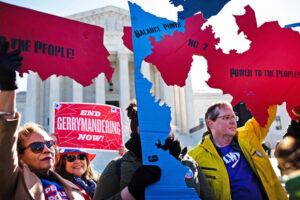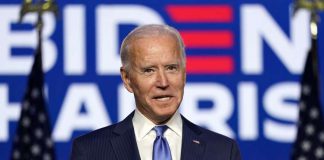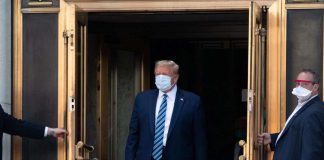JUNE 27, 2023

WASHINGTON, D.C. — The Supreme Court’s ruling on Tuesday in a major election case was bad news for John Eastman — the lawyer aligned with Donald Trump who pushed a novel legal theory in his bid to overturn the 2020 election.
Tuesday’s 6-3 ruling rejected a sweeping version of what has been dubbed the “independent state legislature theory,” which argues that state legislatures have almost unfettered powers to implement election law, free even of the normal legal review carried out by state courts.
Conservative lawyer Eastman had embraced the theory as part of his widely-discredited argument that Vice President Mike Pence had the power to refuse to certify the 2020 presidential election results.
It failed then, and the Supreme Court’s new ruling made it clear that it and similar far-fetched theories will not fly in the 2024 election either.
Eastman expressed disappointment with the ruling, saying in an email exchange that when it comes to presidential elections, “a legislature will be impotent to address questions of obvious illegality and fraud in the conduct of the election in a timely manner.”
Asked if the ruling forecloses the arguments he made in 2020, Eastman said: “No. But it will be murkier than it was previously.”
Others think the ruling could help ensure the opposite: that the courts will not be deluged with questionable lawsuits two years from now, although election lawyers aren’t holding their breath.
“I would hope this is the nail in the coffin to finally give some closure to these very extreme and radical ideas to have rogue legislatures make up rules to preserve power to manipulate an election,” said Sophia Lin Lakin, a voting rights lawyer at the American Civil Liberties Union.
The Supreme Court said clearly that legislatures do not have unlimited authority and that in most instances state courts, as had been traditionally understood, can weigh in.
The ruling in a redistricting case applied to the Elections Clause of the Constitution, which governs rules for federal elections. But if the court had embraced the idea, the legal rationale could have applied also to the Electors Clause, which lays out how presidents are elected.
In 2020, Eastman, who is facing disbarment proceedings in California for his role trying to overturn the election, had suggested as part of his plan for Pence to swing the election for Trump despite President Joe Biden’s clear victory, that Republican-led legislatures could override the will of the people and instead cast electoral votes for Trump.
In a memo written at the time, Eastman wrote that the Constitution “assigns to the legislatures of the states the plenary power to determine the manner for choosing presidential electors.”
Citing the widely debunked claims of what he called “outright fraud” during the 2020 election, Eastman said that Republican legislatures could legally submit their own electors who would vote for Trump.
Eastman’s argument was never put to the test because Pence refused to go along with the plan, but some of the other wild claims made in court during the 2020 election also touched upon the independent state legislature theory.
Most notably, Texas filed a lawsuit directly at the Supreme Court seeking to throw out results in four states Biden won because of changes made to state law by courts or election officials, not the legislature.
The court swiftly dismissed the Texas lawsuit, but there remained unease that it could embrace the independent state legislature theory in another case.
The ruling in the North Carolina case absolves some of those fears while leaving some questions unresolved that are likely to be litigated in the coming years.
In his majority opinion, Chief Justice John Roberts left the door open to federal courts shutting down state court rulings that stray too far from their normal role interpreting state law.
In another 2020 case, the Supreme Court was split 4-4 in declining to block a Pennsylvania Supreme Court ruling that extended the deadline for mail-in ballots because of the Covid-19 pandemic.
The court was shorthanded at the time because of the death of liberal Justice Ruth Bader Ginsburg, who was quickly replaced by conservative Justice Amy Coney Barrett, thereby giving the court its current 6-3 conservative majority.
Legal experts differ in predicting how the court would view a similar case in the future, with conservatives adamant that the state court had inappropriately re-written the law and liberals saying that it was merely carrying out its normal duties interpreting state law.
Tuesday’s decision was a 6-3 split, but only two conservative justices — Clarance Thomas and Neil Gorsuch — indicated an openness to a broad interpretation of the theory.
Andrew Grossman, a conservative lawyer who filed a brief at the Supreme Court urging it to overturn the Pennsylvania court ruling in 2020, said the new ruling made it clear that “there are going to be some limits” on state courts.
In the meantime, lawyers from across the ideological spectrum expect more litigation, potentially including fringe theories similar to those raised in 2020.
“We will see cases, but almost certainly unless something screwy happens they are going to lose a lot,” said Cameron Kistler, a lawyer at voting rights group Protect Democracy.
Courtesy/Source: This article was originally published on NBCNews.com

































































































